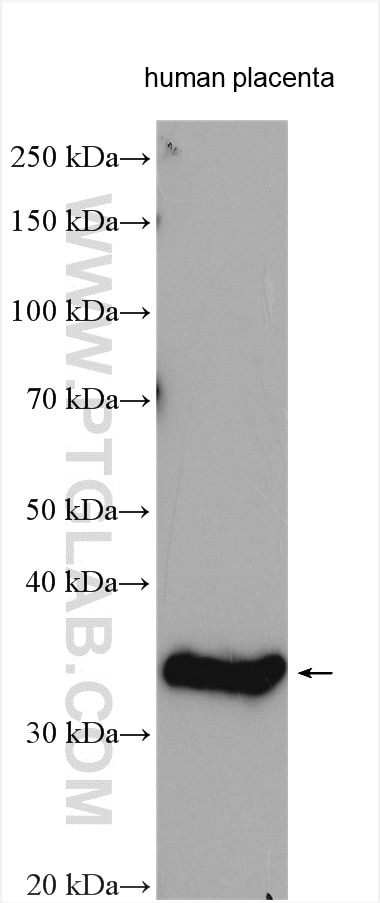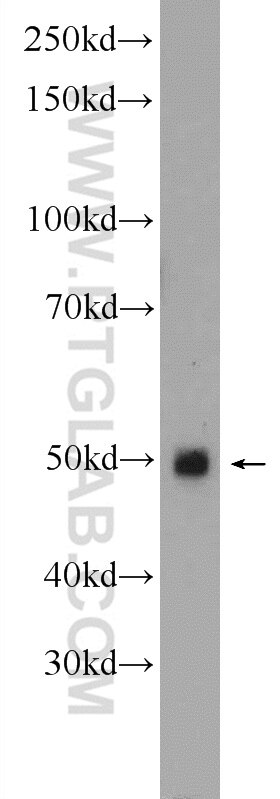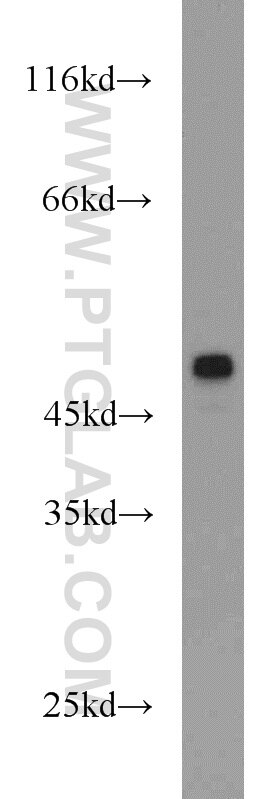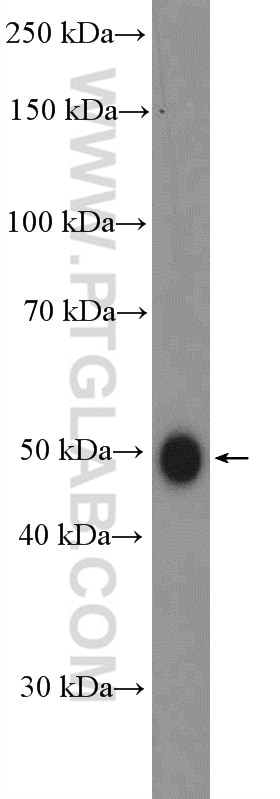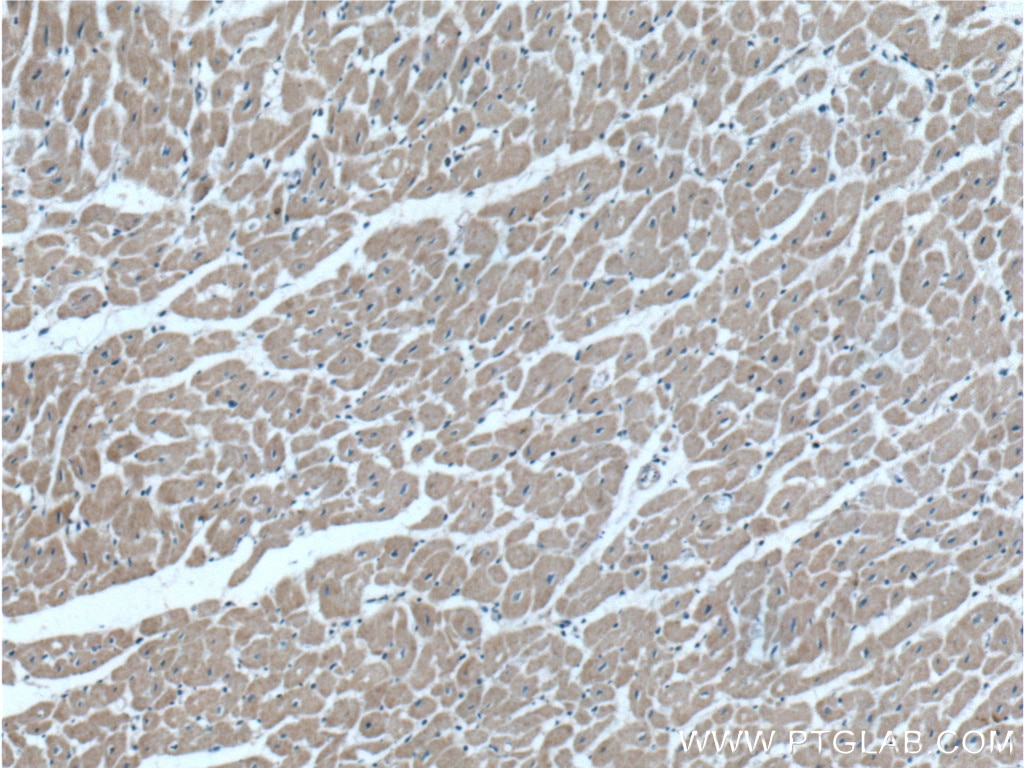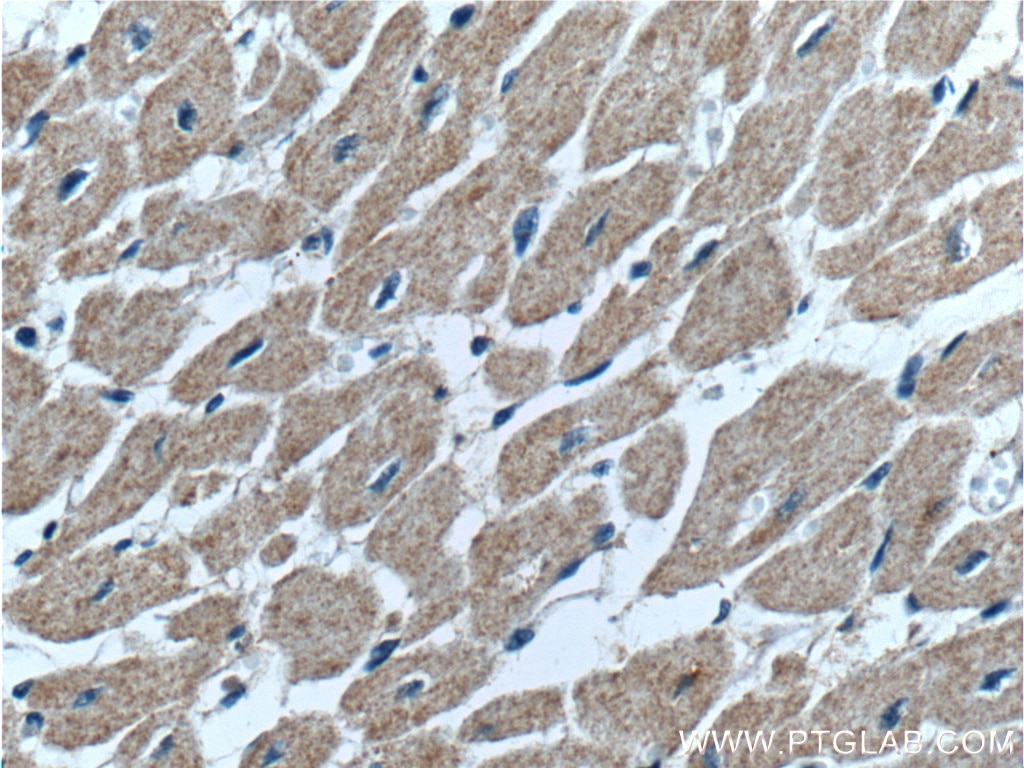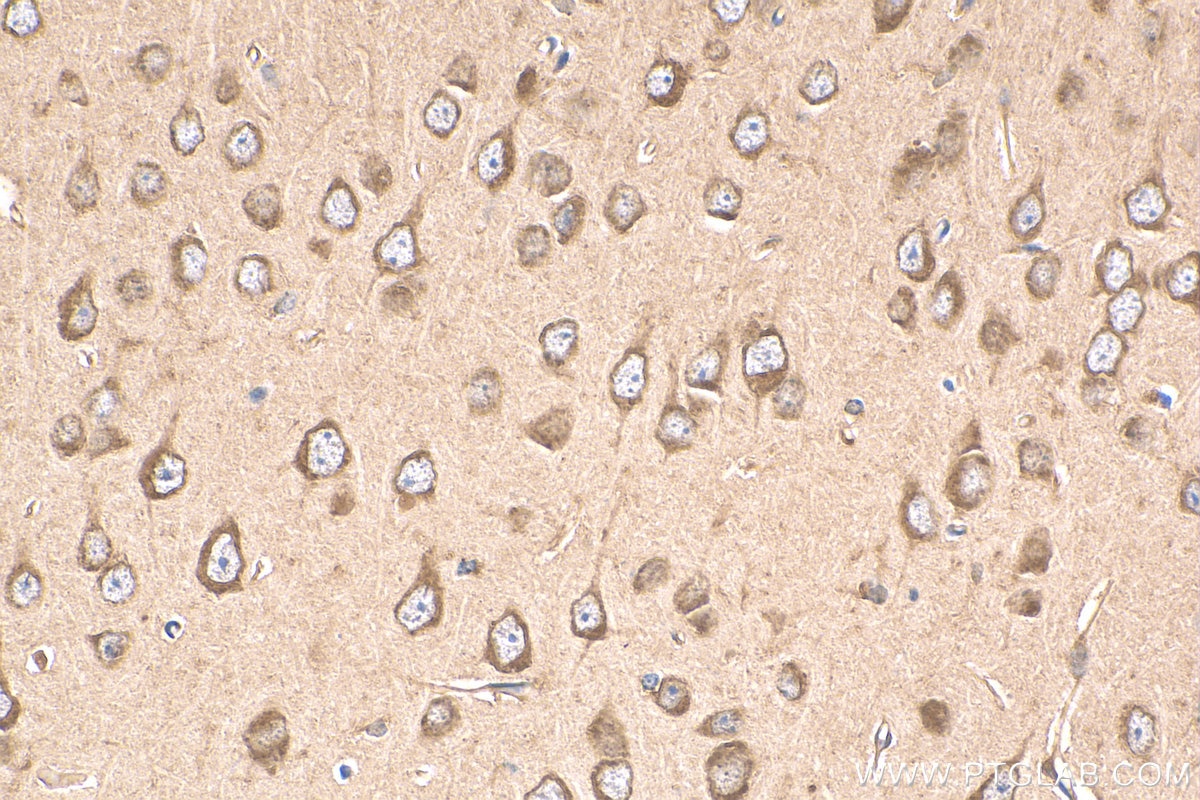- Featured Product
- KD/KO Validated
GDF8/Myostatin Polyklonaler Antikörper
GDF8/Myostatin Polyklonal Antikörper für IHC, WB, ELISA
Wirt / Isotyp
Kaninchen / IgG
Getestete Reaktivität
human, Maus und mehr (4)
Anwendung
WB, IHC, IF, ELISA
Konjugation
Unkonjugiert
Kat-Nr. : 19142-1-AP
Synonyme
Galerie der Validierungsdaten
Geprüfte Anwendungen
| Erfolgreiche Detektion in WB | humanes Plazenta-Gewebe, Mausherzgewebe, Mauslebergewebe, PC-3-Zellen |
| Erfolgreiche Detektion in IHC | humanes Herzgewebe, Maushirngewebe Hinweis: Antigendemaskierung mit TE-Puffer pH 9,0 empfohlen. (*) Wahlweise kann die Antigendemaskierung auch mit Citratpuffer pH 6,0 erfolgen. |
Empfohlene Verdünnung
| Anwendung | Verdünnung |
|---|---|
| Western Blot (WB) | WB : 1:500-1:2000 |
| Immunhistochemie (IHC) | IHC : 1:50-1:500 |
| It is recommended that this reagent should be titrated in each testing system to obtain optimal results. | |
| Sample-dependent, check data in validation data gallery | |
Veröffentlichte Anwendungen
| KD/KO | See 3 publications below |
| WB | See 26 publications below |
| IHC | See 5 publications below |
| IF | See 2 publications below |
Produktinformation
19142-1-AP bindet in WB, IHC, IF, ELISA GDF8/Myostatin und zeigt Reaktivität mit human, Maus
| Getestete Reaktivität | human, Maus |
| In Publikationen genannte Reaktivität | human, Hausschwein, Maus, Ratte, Rind, Zebrafisch |
| Wirt / Isotyp | Kaninchen / IgG |
| Klonalität | Polyklonal |
| Typ | Antikörper |
| Immunogen | GDF8/Myostatin fusion protein Ag13605 |
| Vollständiger Name | myostatin |
| Berechnetes Molekulargewicht | 375 aa, 43 kDa |
| Beobachtetes Molekulargewicht | 50 and 35 kDa |
| GenBank-Zugangsnummer | BC074757 |
| Gene symbol | MSTN |
| Gene ID (NCBI) | 2660 |
| Konjugation | Unkonjugiert |
| Form | Liquid |
| Reinigungsmethode | Antigen-Affinitätsreinigung |
| Lagerungspuffer | PBS mit 0.02% Natriumazid und 50% Glycerin pH 7.3. |
| Lagerungsbedingungen | Bei -20°C lagern. Nach dem Versand ein Jahr lang stabil Aliquotieren ist bei -20oC Lagerung nicht notwendig. 20ul Größen enthalten 0,1% BSA. |
Hintergrundinformationen
Myostatin, also known as GDF-8, is a member of the TGF-beta superfamily. Myostatin is expressed in the myotome and developing skeletal muscles. Myostatin negatively regulates skeletal muscle growth and development through the regulation of anabolic and catabolic pathways in skeletal muscles. Myostatin immunoreactive bands could be identified at ∼50, 32-35, and 16 kDa, which correspond to the precursor, glycosylated dimmer, and monomer, respectively (PMID: 17711997).
Protokolle
| Produktspezifische Protokolle | |
|---|---|
| WB protocol for GDF8/Myostatin antibody 19142-1-AP | Protokoll herunterladen |
| IHC protocol for GDF8/Myostatin antibody 19142-1-AP | Protokoll herunterladen |
| Standard-Protokolle | |
|---|---|
| Klicken Sie hier, um unsere Standardprotokolle anzuzeigen |
Publikationen
| Species | Application | Title |
|---|---|---|
J Cachexia Sarcopenia Muscle Potential therapeutic interventions for chronic kidney disease-associated sarcopenia via indoxyl sulfate-induced mitochondrial dysfunction. | ||
Br J Pharmacol Inhibition of heat shock protein (HSP) 90 reverses signal transducer and activator of transcription (STAT) 3-mediated muscle wasting in cancer cachexia mice. | ||
Int J Mol Sci Renal Ischemia/Reperfusion Early Induces Myostatin and PCSK9 Expression in Rat Kidneys and HK-2 Cells.
| ||
iScience Phosphate depletion in insulin-insensitive skeletal muscle drives AMPD activation and sarcopenia in chronic kidney disease | ||
Aging (Albany NY) Vitellogenin 2 promotes muscle development and stimulates the browning of white fat | ||
Sci Rep Indoxyl sulfate potentiates skeletal muscle atrophy by inducing the oxidative stress-mediated expression of myostatin and atrogin-1. |
